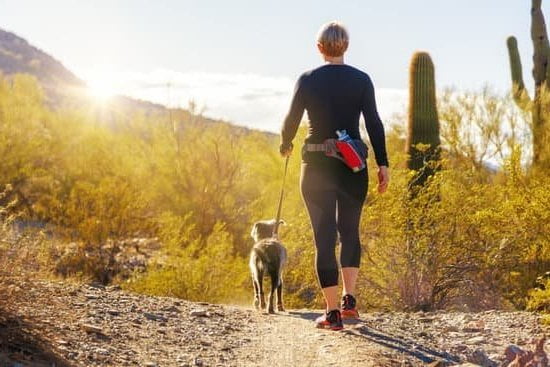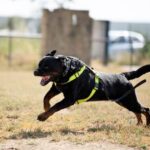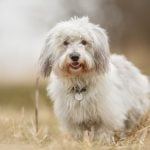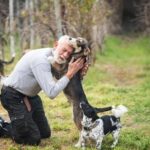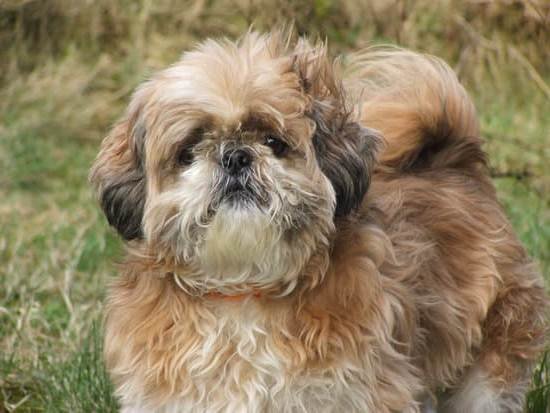Is your dog exhibiting aggressive behavior towards other dogs, such as growling? Understanding the reasons behind this behavior can help you address and correct it.
In this article, we will explore how to train your dog to stop growling at other dogs. We will discuss identifying triggers for growling, establishing a training plan, using positive reinforcement techniques, desensitizing your dog to other dogs, seeking professional help if needed, managing growling behavior in public, monitoring progress, and maintaining a calm and assertive energy with your dog.
Growling is a natural form of communication for dogs, but it can also be a sign of fear, anxiety, or aggression when directed towards other dogs. Identifying the specific triggers that cause your dog to growl can give you insight into their behavior and enable you to develop an effective training plan tailored to their needs. By understanding the root cause of their growling behavior, you can work towards finding a solution that promotes positive interactions with other dogs.
In our guide, we will detail the process of establishing a training plan to address your dog’s growling behavior. Utilizing positive reinforcement techniques and desensitization methods can help discourage growling while promoting more relaxed and social interactions with other dogs.
Additionally, we will provide tips for managing growling behavior in public settings and offer advice on monitoring progress and making necessary adjustments to your training approach. Overall, our goal is to help you build a strong bond with your dog while addressing and correcting their growling behavior toward other dogs.
Identifying the Triggers for Growling Behavior
When it comes to addressing your dog’s growling behavior, it’s important to first identify the triggers that cause your dog to react in this way. Some common triggers for growling at other dogs include fear, possessiveness, territorial behavior, and past negative experiences with other dogs. By understanding what sets off your dog’s growling, you can better tailor your training plan to address these specific issues.
One effective way to identify the triggers for your dog’s growling behavior is to closely observe their body language and behavior when they are around other dogs. Take note of any patterns or situations that consistently lead to growling, such as when another dog approaches their food or toys, or when they feel cornered or threatened in a certain environment.
It’s also important to consider the context in which the growling occurs. Does it happen only when your dog is on-leash? Is it more common in crowded places or during particular activities?
Understanding the specific circumstances that prompt your dog to growl at other dogs will help you develop a targeted training plan to address this behavior. If you’re still not sure about how to train my dog stop growling at other dogs, observing their triggers can give you valuable insight into how best to approach their training in a way that is tailored to their specific needs and behaviors.
| Triggers for Growling Behavior | Examples |
|---|---|
| Fear | Growls when approached by a larger dog |
| Possessiveness | Growls when another dog comes near its toys |
| Territorial Behavior | Growls when another dog enters its space at home |
Establishing a Training Plan to Address the Growling Behavior
Growling is a common behavior in dogs and can often be triggered by various factors such as fear, insecurity, territoriality, or discomfort. As a responsible pet owner, it’s important to address growling behavior in your dog to ensure the safety of both your pet and other animals. Understanding why your dog is growling at other dogs is the first step in addressing this issue.
Identifying the triggers for growling behavior is crucial in developing a training plan to address it. Is your dog feeling threatened by other dogs invading its space? Is there a history of negative experiences with other dogs that may be causing fear or anxiety? Understanding these triggers will help you tailor a training plan that addresses the specific needs and behaviors of your dog.
To train your dog to stop growling at other dogs, positive reinforcement techniques can be highly effective. This involves rewarding desirable behaviors and redirecting negative ones. For example, when your dog remains calm and composed around other dogs without growling, you can offer treats or praise as a form of positive reinforcement. Consistency and patience are key when using positive reinforcement techniques to discourage growling behavior.
In addition to positive reinforcement, desensitizing your dog to other dogs can also be helpful in addressing growling behavior. This involves gradually exposing your dog to other dogs in controlled environments while ensuring that the experience is pleasant and non-threatening. By gradually increasing exposure and using positive reinforcement, you can help your dog become more comfortable around other animals.
If despite all these efforts, the problem persists seeking professional help from a certified dog trainer or behaviorist may be necessary. With their expertise and guidance, you’ll have access to specialized training methods tailored to your dog’s specific needs.
Using Positive Reinforcement Techniques to Discourage Growling
Understanding Positive Reinforcement
Positive reinforcement is a powerful training tool that involves rewarding desirable behavior in order to encourage its repetition. This technique can be highly effective in discouraging growling behavior in dogs. By utilizing positive reinforcement, you can teach your dog that remaining calm and non-aggressive around other dogs will result in positive outcomes.
Implementing Positive Reinforcement for Growling
To begin using positive reinforcement to discourage growling, start by identifying the triggers for your dog’s behavior. Once you understand what causes the growling, you can proactively work on addressing those triggers through positive reinforcement techniques. When your dog remains calm and composed around other dogs, reward them with treats, praise, or playtime. This will help your dog associate calm behavior with positive outcomes.
Consistency and Patience
Consistency is key when using positive reinforcement to discourage growling at other dogs. It’s important to be patient and persistent in your efforts, as changing a dog’s behavior takes time and dedication. Remember to always remain calm and assertive during training sessions, as your energy can directly impact your dog’s behavior. With consistent practice and patience, you can effectively train your dog to stop growling at other dogs using positive reinforcement techniques.
By consistently implementing positive reinforcement techniques and maintaining a calm yet assertive energy around your dog, you can effectively discourage growling behavior over time. If you are struggling to see progress or encounter difficulties during training, don’t hesitate to seek professional help from a certified dog trainer or behaviorist.
Remember that every dog is unique, so it’s important to adjust your training approach based on your individual pet’s needs and responses. With dedication and patience, building a strong bond of trust through training will ultimately lead to improved behavior and a happier relationship with your furry friend.
Desensitizing Your Dog to Other Dogs
- Start by identifying the distance at which your dog begins to react or show signs of aggression towards other dogs. This will help you gauge how close you can get to other dogs without triggering a negative reaction from your dog.
- Once you have identified the distance, gradually expose your dog to other dogs from a safe distance, using positive reinforcement techniques such as treats and praise when they remain calm and relaxed.
- As your dog becomes more comfortable with the presence of other dogs at that distance, slowly decrease the distance between them while continuing to use positive reinforcement.
- It’s important to be patient and consistent during this process, as desensitization takes time and requires dedication from both you and your dog.
By following these steps, you can help your dog overcome their fear or aggression towards other dogs and learn to remain calm in their presence.
Remember that desensitizing your dog to other dogs takes time and patience, so it’s important not to rush the process. Consistency and positive reinforcement are key in helping your dog overcome their growling behavior towards other dogs.
Seeking Professional Help if Needed
If you have tried various training techniques and have not seen any improvement in your dog’s growling behavior, it may be time to seek professional help. A professional dog trainer or behaviorist can provide expert guidance and support to address your dog’s aggressive behavior towards other dogs.
When seeking professional help, consider the following options:
- Consulting with a certified dog trainer who specializes in aggression and behavior modification
- Scheduling a consultation with a veterinary behaviorist who can assess your dog’s behavior and recommend a tailored intervention plan
- Enrolling your dog in a specialized training program designed to address aggression towards other dogs
Professional help can be beneficial for addressing complex behavioral issues, as these experts have the knowledge and experience to develop effective strategies for modifying aggressive behavior. They can also provide guidance on how to train my dog stop growling at other dogs using humane and science-based methods.
Remember that seeking professional help is not a sign of failure as a pet owner, but rather a proactive step towards improving your dog’s quality of life and ensuring the safety of others. With the support of a trained professional, you can work towards resolving your dog’s growling behavior and building a harmonious relationship with them.
Tips for Managing Growling Behavior in Public
When it comes to managing growling behavior in public, there are several tips and techniques that can be employed to ensure the safety of both your dog and other dogs. It’s important to remember that growling is a form of communication for dogs, so it’s crucial to address this behavior in a calm and assertive manner.
Understanding Your Dog’s Triggers
The first step in managing growling behavior in public is to identify the triggers that cause your dog to growl. Is it specific types of dogs, certain environments, or particular situations? By understanding what sets off your dog’s growling behavior, you can work towards desensitizing them to these triggers and addressing the root cause of the issue.
Training and Positive Reinforcement
Once you’ve identified the triggers for your dog’s growling behavior, it’s important to establish a training plan using positive reinforcement techniques. This could involve rewarding your dog with treats or praise when they remain calm around other dogs. Consistency is key in training, so make sure to practice these techniques regularly and in various environments.
Seeking Professional Help
If you’re struggling to manage your dog’s growling behavior in public, don’t hesitate to seek professional help. A certified dog trainer or animal behaviorist can provide valuable insight and guidance on how to effectively train your dog to stop growling at other dogs. They can also offer personalized strategies tailored to your dog’s specific needs.
By implementing these tips for managing growling behavior in public, you can work towards creating a positive and safe experience for both your dog and other dogs when out in public settings. Remember that patience, consistency, and a calm energy are essential when addressing this behavioral issue. With time and dedication, you can help your dog overcome their growling tendencies and build a strong bond with them through effective training methods.
Monitoring Progress and Adjusting Training as Needed
As you work on training your dog to stop growling at other dogs, it is important to consistently monitor their progress and adjust your training plan as needed. Every dog is different, and what works for one dog may not work for another. It’s essential to be flexible and patient during the training process.
One way to monitor progress is by keeping a journal or log of your dog’s behavior when they are around other dogs. Note any instances of growling, the triggers for the behavior, and your dog’s overall demeanor. This can help you identify patterns and track improvements over time.
If you find that your current training methods are not producing the desired results, don’t be afraid to adjust your approach. This may involve seeking guidance from a professional dog trainer or behaviorist who can provide personalized advice based on your dog’s specific needs. It’s important to remain open-minded and willing to try new techniques in order to effectively address your dog’s growling behavior.
In addition to adjusting your training plan, it’s important to also consider any changes in your dog’s environment or routine that may be impacting their behavior. Stress, illness, or changes in social dynamics can all contribute to growling behavior in dogs. By staying attentive to these factors and making necessary adjustments, you can create a more positive and supportive environment for your dog as they work towards overcoming their growling tendencies.
By being proactive and adaptive in your approach, you can help set up your dog for success in addressing their growling behavior with other dogs. Regularly monitoring progress and making adjustments as needed will ultimately contribute to a more effective training experience for both you and your furry friend.
Maintaining a Calm and Assertive Energy Around Your Dog
When training your dog to stop growling at other dogs, it’s essential to maintain a calm and assertive energy around them. Dogs are highly sensitive to their owners’ emotions and can pick up on any anxiety, fear, or nervousness you may be feeling. Therefore, it’s crucial to project a sense of confidence and calmness when working with your dog to modify their behavior.
One way to maintain a calm and assertive energy is by using positive reinforcement techniques during training sessions. By rewarding your dog for good behavior with treats, praise, or toys, you can create a more positive association with other dogs. This approach can help reduce their anxiety and decrease the likelihood of growling.
Additionally, practicing mindfulness and staying present in the moment during training sessions can help you project a calm and assertive energy. Avoid becoming frustrated or impatient if progress is slow, as this can negatively impact your dog’s behavior. Instead, focus on staying patient, consistent, and composed throughout the training process.
It’s also important to create a peaceful environment for your dog at home by reducing any potential sources of stress or tension. By providing a secure and harmonious living space for your pet, you can contribute to maintaining a calm and balanced energy in their surroundings.
| Positive Reinforcement Techniques | Mindfulness Practices |
|---|---|
| Using treats, praise, or toys as rewards for good behavior | Staying present in the moment during training sessions |
| Creating a positive association with other dogs | Avoiding frustration or impatience during training |
Building a Strong Bond and Trust With Your Dog Through Training
In conclusion, training your dog to stop growling at other dogs requires patience, understanding, and consistency. It is important to first understand why dogs growl at other dogs and identify the triggers for this behavior. Once you have established a training plan, using positive reinforcement techniques can help discourage growling while desensitizing your dog to other dogs can also be effective.
Seeking professional help may be necessary in some cases, especially if the growling behavior is severe or persistent. Additionally, managing growling behavior in public settings requires careful attention and monitoring of your dog’s reactions. It is essential to maintain a calm and assertive energy around your dog while building a strong bond and trust through training.
By following these steps and tips, you can work towards helping your dog overcome their tendency to growl at other dogs. Remember that every dog is unique, so be patient and consistent in implementing the training plan. With time and dedication, you can see improvement in your dog’s behavior and build a stronger bond with them through the training process.
Frequently Asked Questions
How Do You Discipline a Dog That Growls?
Disciplining a dog that growls should be approached with caution. It’s important to address the underlying reason for the growling, such as fear or discomfort, rather than simply punishing the behavior. Consulting with a professional trainer or behaviorist can help determine the best approach for your specific situation.
How Do I Stop My Dog From Being Aggressive Towards Other Dogs?
To stop a dog from being aggressive towards other dogs, it’s crucial to address the root cause of the aggression. This may involve desensitization and counterconditioning exercises, proper socialization, and positive reinforcement training techniques. Seeking guidance from a certified animal behaviorist is recommended for addressing aggressive behaviors.
How Do You Calm a Growling Dog?
Calming a growling dog involves understanding why they are growling in the first place. It’s important to avoid punishment and instead focus on creating a safe and secure environment for the dog.
Providing them with space, removing potential triggers, and using calming techniques like gentle massage or soothing music can help alleviate their anxiety. If this behavior persists, seeking professional guidance is advisable.

Welcome to the blog! I am a professional dog trainer and have been working with dogs for many years. In this blog, I will be discussing various topics related to dog training, including tips, tricks, and advice. I hope you find this information helpful and informative. Thanks for reading!

